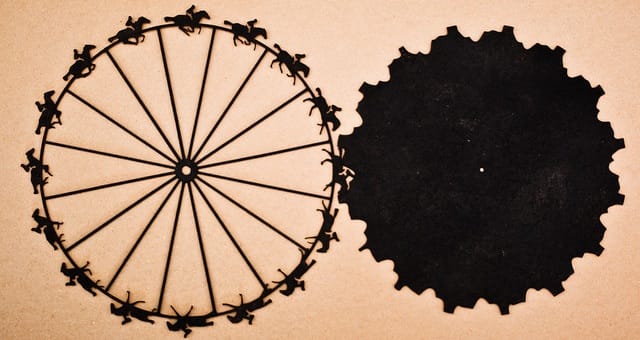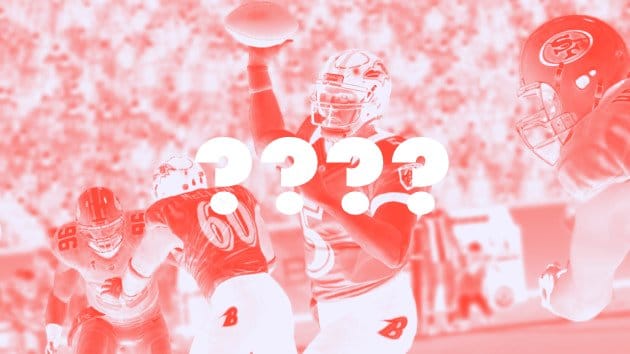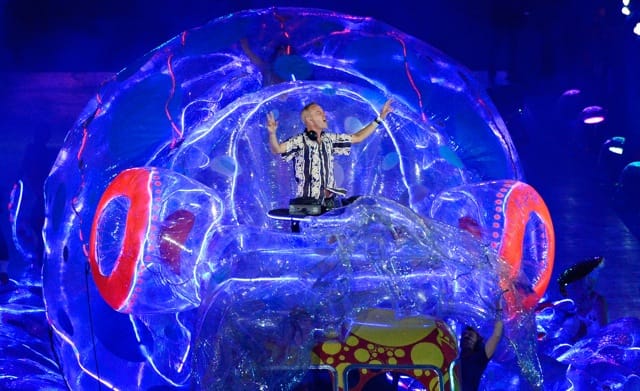Strings and Swings

I have taken up golf. Or something kind of like golf. Really, I have taken up the hobby of hitting golf balls at the driving range. I have yet to work up the nerve to go alone to a golf club, those gregarious havens of open-armed welcoming, and play a round of golf. Golf clubs send out groups of four to play, and I don’t look forward to being the random guy who screws up a day of golf for three friends by being lousy.
I can get the ball off the ground. However, nine out of 10 shots pushes at a 45-degree angle to the right of where I am aiming. I have heard that golf is hard, so I don’t beat myself up about it.
Hitting 80 shots of golf every weekend, though, has made me keenly aware of my body in motion. Golf being a game of finely tuned mechanics, I focus on every nuance of my swing, from the turn of my hips, to the bend of my knee, the rotation of my wrist, to the plane of the club swing as my arms descend.
Corporeality manifests in sports videogames in a myriad of fascinating ways. However, the body is often considered a separate experience, since you can easily learn to perform actions in a videogame—whether dunking a basketball, kicking a field goal, or throwing a curveball—that would require significant training to execute in real life. The most involved sports skills are performed with thumbs while seated.
Thoroughly dissecting a complete action like a golf swing, I am soon overwhelmed by the complexity of my body in motion.
But the body is not completely removed. Rather, the interface is mapped in interesting ways to the controller in hand, and the performative action is abstracted and simplified. Consider the swing of a baseball bat in MLB 12: The Show. There are actually several ways the action of a swing is distilled in the game, the simplest being the press of a button timed to an animation for a swing. That worked in R.B.I. Baseball, too, 25 years ago.
Another way to swing in The Show, similar to the “Load and Fire Batting System” from MVP 06: NCAA Baseball, involves rocking the right thumbstick back to mimic the “loading” stage of a swing, when a batter shifts his weight onto the back leg and rotates his hips. Then a thrust of the thumbstick toward the ball represents the explosion as the “charged” body uncoils like a spring, firing with the arms and bat following through. In this thumbstick action, the motion of the thumb models the more complex motions and mechanics of a swing.
Many sports games take a similar approach to dealing with corporeality of an athlete at play. Basketball games will have players rolling the thumbstick to have the player spin, or rocking the thumbstick left-to-right (or vice versa) to mimic a crossover. Golf swings, pitching, field goals, soccer dribbling—many different skills are abstracted into thumbstick movements.
Other games approach corporeality quite differently. Many of Bennett Foddy’s games experiment with how players control the body of their avatar. QWOP, the sprinting game where you individually control the motion of the arms and legs of a runner, might be the best known of Foddy’s corporeal sports games, but lately I have been playing and thinking about Little Master Cricket. In this game you use the mouse to control the mechanics of a cricket batter as he swings at shot after shot. The cricket batter is like a marionette with invisible strings tied to your mouse. The limbs are all connected and jointed, but you must learn to gracefully move those interconnected parts to execute a swing.
Learning to hit in Little Master Cricket is nontrivial. The game is hard, and I spend much of my time playing the game feeling pretty clumsy, as I would trying to manipulate a puppet on strings. I don’t believe Foddy is simply trying to play a joke on players, though the clumsy motions of his characters are quite amusing. Foddy’s sports games highlight the complexity of actions in what seem to be the most basic sports tasks.
This gap between playing and doing allows us to suspend disbelief and have a more immersive sports game experience.
In a way, this is how I feel at the driving range. I am aware of my interconnected limbs, and the causality of my movements. As I arc slowly through a practice swing, I consider the action and reaction of each of my movements—the turn of a hip, the lifting of a heel. Thoroughly dissecting a complete action like a golf swing, I am soon overwhelmed by the complexity of my body in motion. So much is involved that when I try to change one small action, I alter any of a dozen other parts of the swing, creating a cascade that I cannot interpret.
This is why I have never taken to motion-sensor sports games. I soon put away the Nintendo Wii version of Tiger Woods to pick up a thumbstick-controlled game. I don’t like sports games that use Microsoft Kinect or PlayStation Move because the tracking of the body is still not sophisticated enough to account for how each part of a motion can affect the outcome. Hitting a golf ball with a Move controller in Tiger Woods, though perhaps still challenging, is far less difficult than hitting that tiny dimpled ball with a real club. At the range, I’m a hack; in the game I’m winning the PGA Tour.
These are videogames, after all, which provide the sensation of performing a difficult athletic feat without the extensive training required. However, with a thumbstick motion or series of button presses, I am always aware of my distance from an athlete. This gap between playing and doing allows us to suspend disbelief and have a more immersive sports game experience. Motion controls, which aim for realism by tracking our body movements, don’t bring me closer to the action. Instead, they reinforce that what I am doing is not real; and that if you replaced the Move controller with a club, that clumsy-ass swing would deposit golf balls into the pond at the driving range.
Boomshakalaka! explores the intersection of sports culture and videogame culture.
Image by Quasimondo




Comments ()